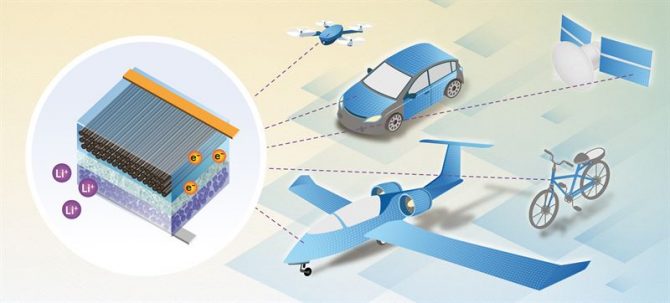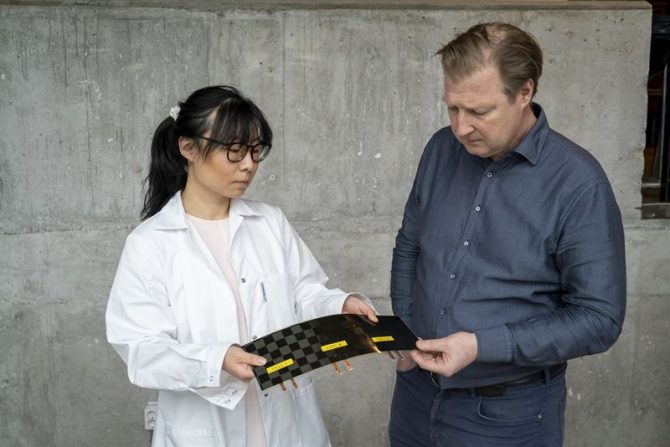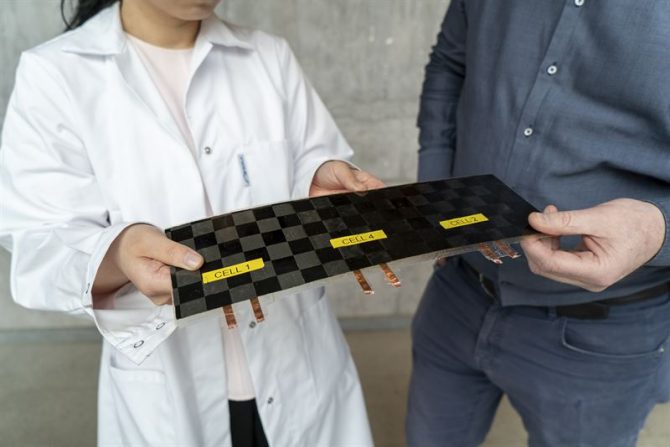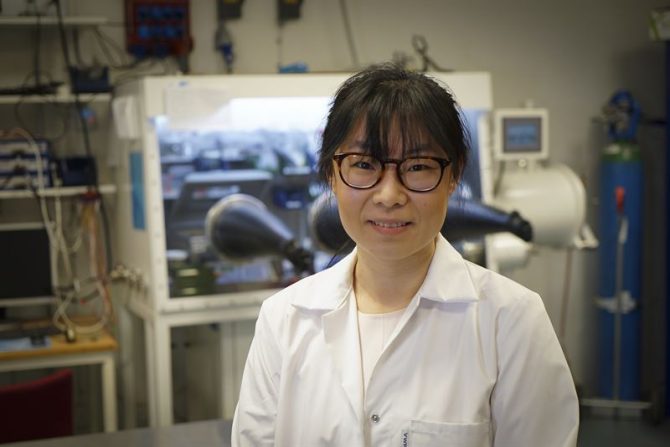
Big breakthrough for ’massless’ energy storage
EP&T Magazine
Electronics Power Supply / Management batteries power research transportationStructural battery performs 10-times better than all previous versions
Researchers from Chalmers University of Technology in Gothenburg, Sweden have produced a structural battery that performs ten-times better than all previous versions. It contains carbon fibre that serves simultaneously as an electrode, conductor, and load-bearing material. Their latest research breakthrough paves the way for essentially ’massless’ energy storage in vehicles and other technology.
The batteries in today’s electric cars constitute a large part of the vehicles’ weight, without fulfilling any load-bearing function. A structural battery, on the other hand, is one that works as both a power source and as part of the structure – for example, in a car body. This is termed ‘massless’ energy storage, because in essence the battery’s weight vanishes when it becomes part of the load-bearing structure. Calculations show that this type of multifunctional battery could greatly reduce the weight of an electric vehicle.

‘Mass-less’ energy storage in vehicles. Source: Chalmers University of Technology
The development of structural batteries at Chalmers University of Technology has proceeded through many years of research, including previous discoveries involving certain types of carbon fibre. In addition to being stiff and strong, they also have a good ability to store electrical energy chemically. This work was named by Physics World as one of 2018’s ten biggest scientific breakthroughs.
The first attempt to make a structural battery was made as early as 2007, but it has so far proven difficult to manufacture batteries with both good electrical and mechanical properties.
But now the development has taken a real step forward, with researchers from Chalmers, in collaboration with KTH Royal Institute of Technology in Stockholm, presenting a structural battery with properties that far exceed anything yet seen, in terms of electrical energy storage, stiffness and strength. Its multifunctional performance is ten times higher than previous structural battery prototypes.

Leif Asp, Professor at the Division of Materials and Computational Mechanics Chalmers University of Technology. Source: Chalmers University of Technology
The battery has an energy density of 24Wh/kg, meaning approximately 20 percent capacity compared to comparable lithium-ion batteries currently available. But since the weight of the vehicles can be greatly reduced, less energy will be required to drive an electric car, for example, and lower energy density also results in increased safety. And with a stiffness of 25 GPa, the structural battery can really compete with many other commonly used construction materials.
“Previous attempts to make structural batteries have resulted in cells with either good mechanical properties, or good electrical properties. But here, using carbon fibre, we have succeeded in designing a structural battery with both competitive energy storage capacity and rigidity,” explains Leif Asp, Professor at Chalmers and leader of the project.
Super light electric bikes
The new battery has a negative electrode made of carbon fibre, and a positive electrode made of a lithium iron phosphate-coated aluminum foil. They are separated by a fibreglass fabric, in an electrolyte matrix. Despite their success in creating a structural battery ten times better than all previous ones, the researchers did not choose the materials to try and break records – rather, they wanted to investigate and understand the effects of material architecture and separator thickness.

Johanna Xu and Leif Asp. Source: Chalmers University of Technology
Now, a new project, financed by the Swedish National Space Agency, is underway, where the performance of the structural battery will be increased yet further. The aluminium foil will be replaced with carbon fibre as a load-bearing material in the positive electrode, providing both increased stiffness and energy density. The fibreglass separator will be replaced with an ultra-thin variant, which will give a much greater effect – as well as faster charging cycles. The new project is expected to be completed within two years.
Leif Asp, who is leading this project too, estimates that such a battery could reach an energy density of 75 Wh/kg and a stiffness of 75 GPa. This would make the battery about as strong as aluminium, but with a comparatively much lower weight.
“The next generation structural battery has fantastic potential. If you look at consumer technology, it could be quite possible within a few years to manufacture smartphones, laptops or electric bicycles that weigh half as much as today and are much more compact”, says Leif Asp. And, in the longer term, it is absolutely conceivable that electric cars, electric planes and satellites will be designed with and powered by structural batteries.

Structural battery with record performance. Source: Chalmers University of Technology
“We are really only limited by our imaginations here. We have received a lot of attention from many different types of companies in connection with the publication of our scientific articles in the field. There is understandably a great amount of interest in these lightweight, multifunctional materials,” says Leif Asp.
More about: The research on structural batteries
The structural battery uses carbon fibre as a negative electrode, and a lithium iron phosphate-coated aluminium foil as the positive electrode. The carbon fibre acts as a host for the lithium and thus stores the energy. Since the carbon fibre also conducts electrons, the need for copper and silver conductors is also avoided – reducing the weight even further. Both the carbon fibre and the aluminium foil contribute to the mechanical properties of the structural battery. The two electrode materials are kept separated by a fibreglass fabric in a structural electrolyte matrix. The task of the electrolyte is to transport the lithium ions between the two electrodes of the battery, but also to transfer mechanical loads between carbon fibres and other parts.
The project is run in collaboration between Chalmers University of Technology and KTH Royal Institute of Technology, Sweden’s two largest technical universities. The battery electrolyte has been developed at KTH. The project involves researchers from five different disciplines: material mechanics, materials engineering, lightweight structures, applied electrochemistry and fibre and polymer technology. Funding has come from the European Commission’s research program Clean Sky II, as well as the US Airforce.

Johanna Xu, Dr at the Department of Industrial and Materials Science, Chalmers University of Technology. Source: Chalmers University of Technology
